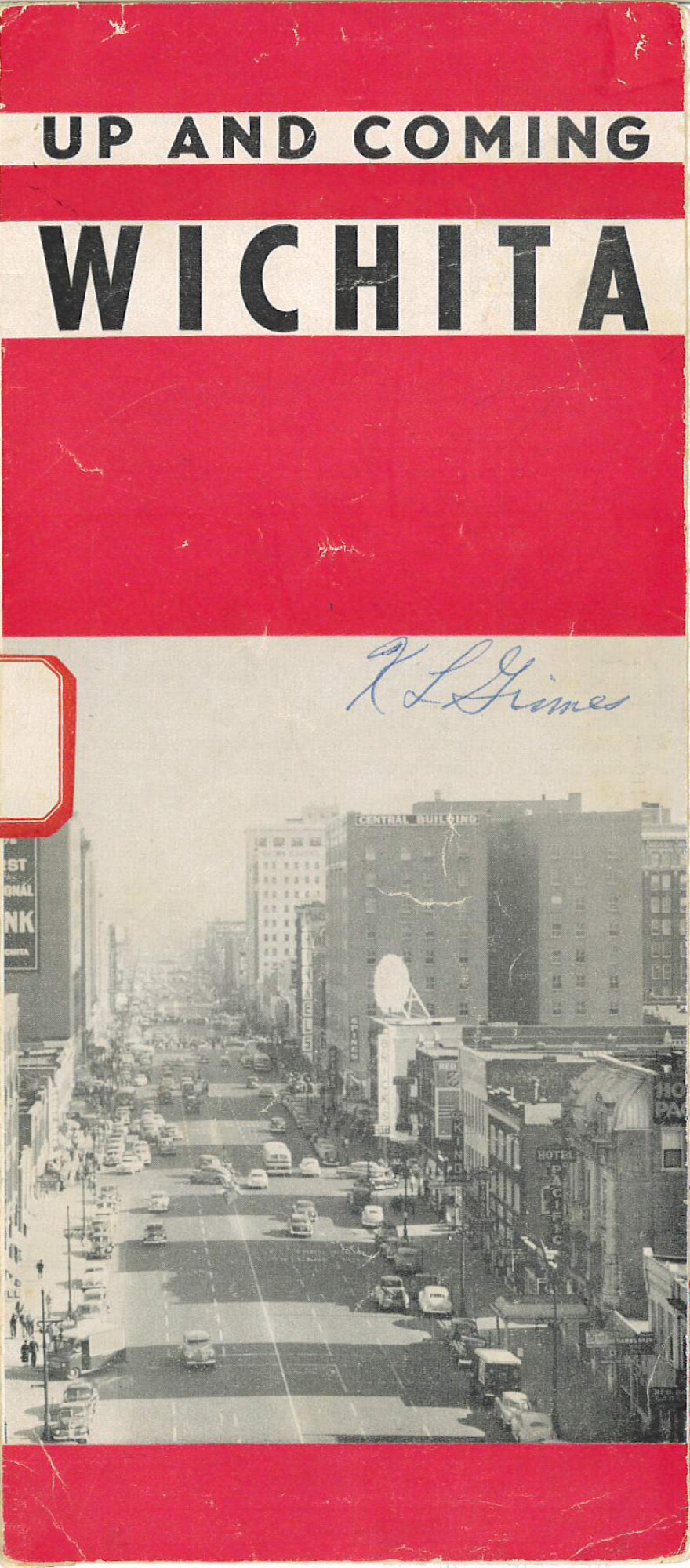KMUW is turning 70 years old this week, so we decided to take a peek at what Wichita looked like in 1949, the year the station was born. Dr. Jay Price, director of Wichita State University's Public History program, gives us a glimpse.
Interview Highlights

On city limits:
"A modern Wichitan transported back to 1949 would have found a much more compact city. Drivers would have come in along Broadway, Highway 81, from the north past the industrial corridor that included the Wichita stockyards, as well as the refinery and the grain elevators.
The hub of the city would have been downtown, along Douglas, where our major department stores were. It was the center of our theater district, our major restaurants, our major hotels. Union Station would have been a front door to Wichita.
Southside would have been the Wichita airport, right next to the Boeing plant and the workers' houses of Planeview and Hilltop Manor. The primary route east out of town was Central — you would have headed out past the edge of town, which really was Oliver. College Hill and Crown Heights were the extent of the eastern edge of Wichita.
Going to the west, the main routes would have been Maple and Douglas — Kellogg does not cross the Arkansas River at this time. West of the river, the area was still prone to flooding, so you didn't have a lot of development beyond the areas that had grown during the Victorian era, what we now call Delano."
The people:
"Wichita's population in 1950 was 168,000. We had grown from the 1940 figure of 114,000 — with World War II there's a major influx. African Americans are going to be about five percent of the population; the Hispanic and Latino community is going to be very, very small; we won't have a Southeast Asian presence, an Asian presence is going to be more Chinese.
Wichita is still a very segregated city. African Americans are not going to be welcome in the big downtown theaters. At restaurants downtown, they're going to be expected to go around the back door, take their food as takeout, and go home. So there was a need for a community where the services African Americans could not avail themselves of downtown are able to function — everything from doctors and stores and schools are located in the 9th and Cleveland area. That was where the Dunbar Theater was located, that's where a number of prominent African American businesses such as Jackson Mortuary were.
The one big demographic shift is this arrival of a whole new population from the South, coming to work in the aircraft industry from Oklahoma, Missouri, Arkansas, the Ozarks…"

On industry:
"During World War II there's a tremendous expansion at the major aircraft plants: Boeing, Beechcraft and Cessna. And then … it ends. B-29s are rolling off the assembly lines and pretty much into the scrap heap. With the conclusion of hostilities, there's not a need for all this wartime production. And a lot of the aircraft companies are running scared. They're looking at other opportunities, everything from making furniture and automobiles to pre-fab housing.
By the mid-to-late-‘40s, however, Wichita is starting to position itself again regarding aviation. Beechcraft and Cessna are developing personal aviation — it's not out of the realm of possibility that in the future we won't have cars anymore and we'll fly everywhere. For Boeing, it's the defense industries, especially with the onset of the Cold War."
Wichita looks to the future:
Wichita was a city in transition in 1949. The movers and shakers would have been World War I vets or a little older. And now there's a sense that a new, younger generation is coming on board. We have to remember that the World War II veterans are the junior members of society — they're just taking advantage of the GI Bill, they're going to school, they're marrying, they're getting houses, and so there's this sense that this generation is going to take on the reins of the community. There's a sense of hopefulness as new schools are built, new suburbs are built, new churches are built and Wichita's aviation is going to continue to grow and we're going to be this bigger regional and even national center.
This is a city that is seeing itself as the embodiment of the American Dream. This is small-town practicality coupled with high-tech, and that's exactly what this era loved."




